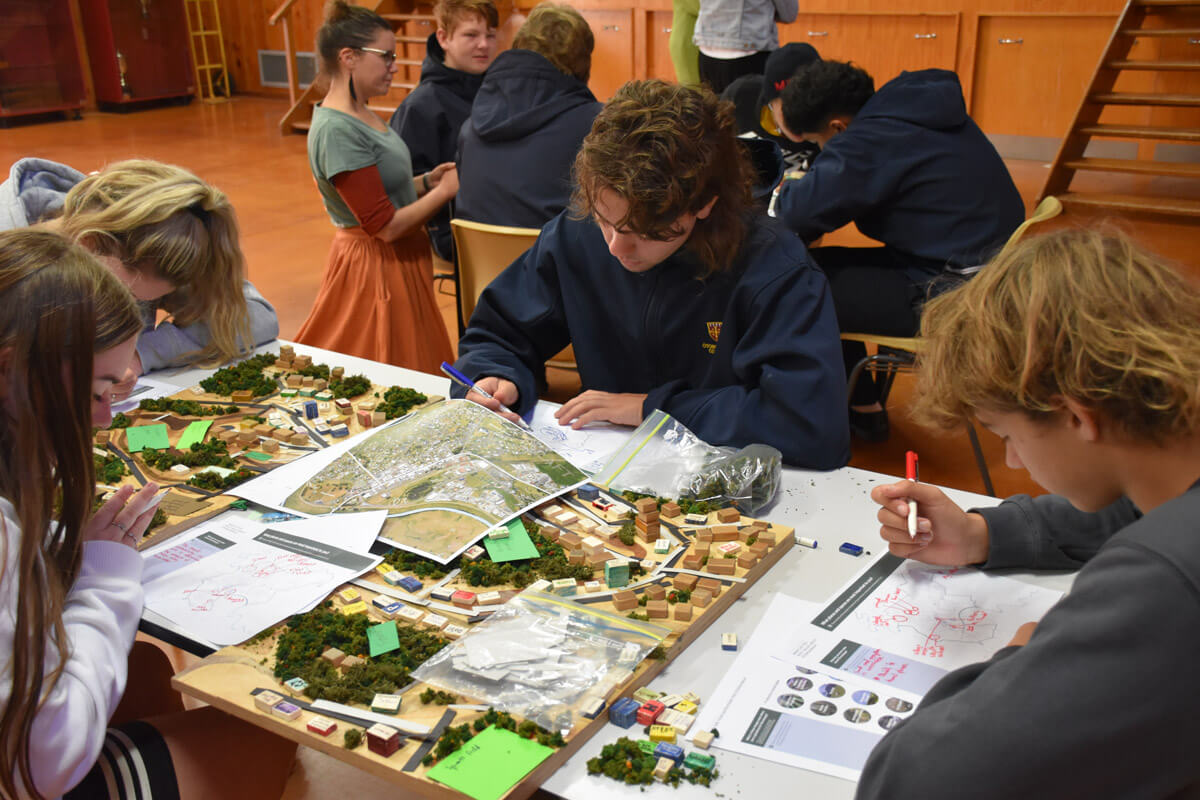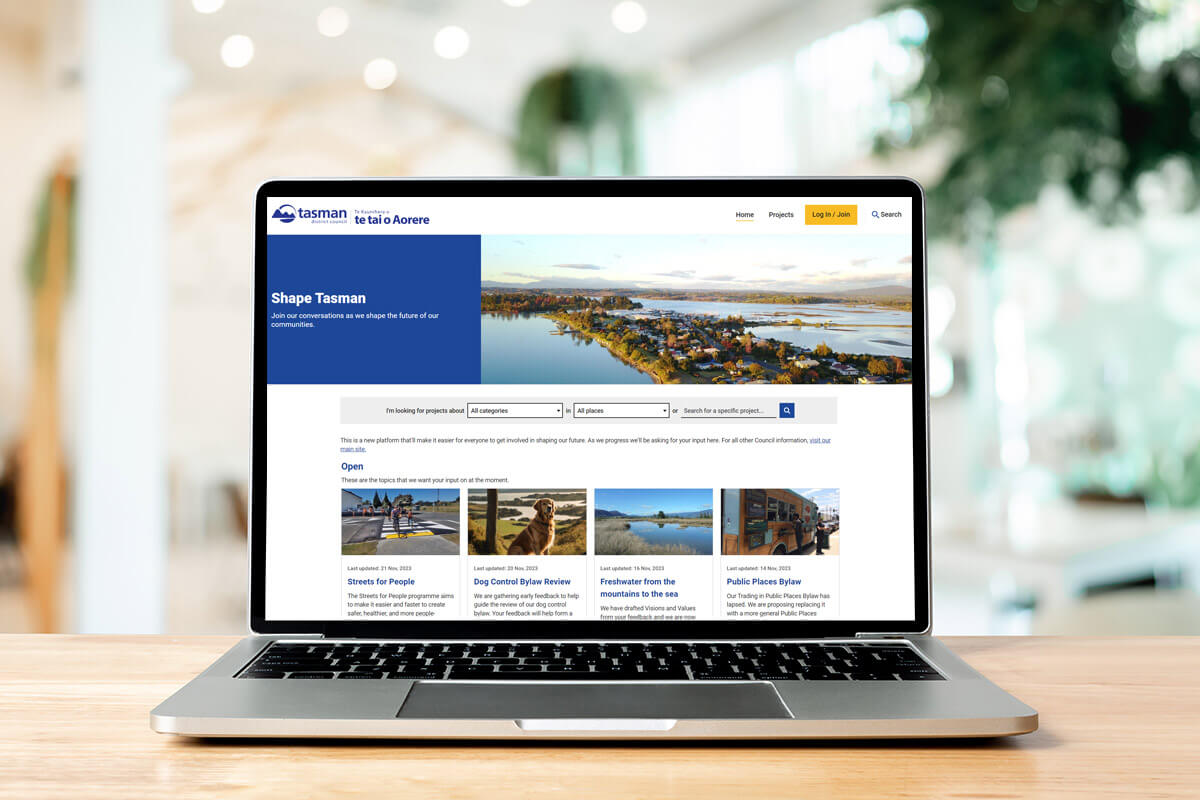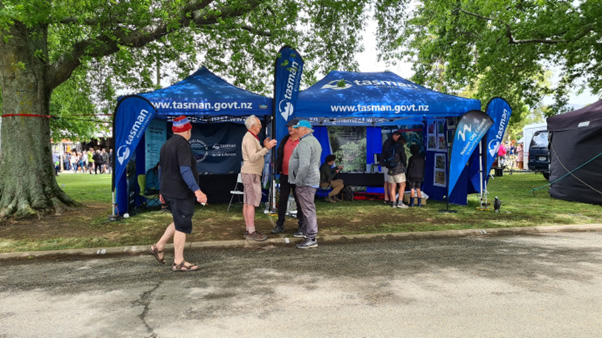
Stakeholder engagement and community consultation in the Top of the South
All local and regional councils, and unitary authorities like Tasman District Council, are required to do stakeholder engagement to get feedback on the development of policies and changes of plans. While not exactly communications or marketing, managing engagements uses a lot of the same skills and tools that we would normally leverage on comms and marketing projects.

TDC needed help quickly as they were just about to launch a major round of engagement on the development of the wide-reaching Tasman Environment Plan (TEP) and were yet to replace a previous communications contractor. An ideal use for an outsourced comms and marketing team.
When a manager from the Environmental Policy team at Tasman District Council (TDC) approached Andrew, one of our staff members based in Nelson, to ask for help with their stakeholder engagements, we jumped at the chance.
While we knew we were going to have to hit the ground running if we were going to help TDC, we also had good experience across the range of tasks required to pull together to achieve a successful engagement.
Like most things, the key to a successful engagement process is good planning. Being similar to a marketing strategy, there is quite a bit to planning an engagement process. In the same way that a marketing strategy leads to a marketing plan and a content calendar, an engagement strategy leads to a week-by-week engagement calendar.
Our first engagement round helping TDC, while a steep learning curve in terms of fitting in with internal Council processes and systems, etc, was also very successful.
So what does a wide-reaching stakeholder engagement involve?
For TDC, the first engagement involved a lot of the elements typically used, keeping in mind that although Tasman has a fairly low population of around 55,000 people, it covers a large area that extends from Richmond, across the top of the south to Golden Bay and the very top of the West Coast and south to Murchison and almost as far south as the Lewis Pass.
The ‘hub’ of the engagement was the TEP section on Shape Tasman, built on Social Pinpoint, the Australian online engagement platform that a lot of councils are using these days for council consultation processes in New Zealand. While paper versions of all major documents, and the feedback forms were printed, the primary source of information for the engagement, and main place to provide feedback were on Shape Tasman.
Social Pinpoint, which was previously known as The Hive, is a website platform, not unlike Squarespace or Shopify, that makes it easy for a council to create an online presence for an engagement and provides a suite of tools that are specifically designed to capture feedback.
Like a lot of website platforms, Social Pinpoint is powerful and easy to use, but you are limited to design options that are built in. If you are used to the freedom of WordPress, or Squarekicker on Squarespace, you will find yourself wanting to make design changes that aren’t possible, especially when putting surveys together. The Synthesis team now has a range of valuable insights on how best to use social Pinpoint/the Hive.
To point people at Shape Tasman, we used a range of communication channels, including Facebook, Newsline, the fortnightly Council newsletter, regular Council slots in local newspapers and publications, and small local newsletters.
We also helped run pop up events at locations across the region, including local markets, agricultural shows and outside cafes and shops.
For people that couldn’t make it to any of the ‘in-person’ events we also put on webinars about the key areas of the plan, with lunchtime and evening webinars offered to make it easy for people to find a time that suited them. The webinars were also recorded, uploaded to the Council YouTube account, and embedded on Shape Tasman for people to watch later.

So, what makes an engagement successful?

For a regional council, conducting a stakeholder engagement has multiple drivers, and likewise multiple outcomes that can count as success.
The perfect engagement would see all stakeholder groups and audiences getting involved, a large amount of feedback received and a clear mandate provided for specific policy development.
Reality is often not that kind to us though. Engagement fatigue is a very real thing when you are working with councils. They often have up to 5 or 6 engagement processes running at a time, and it’s hard to make anything you do stand out from the day-to-day council communications.
Given that, what does an engagement need to do to tick the necessary boxes? For some engagements, the council is legally required to go out to the community and stakeholders by central government regulations or acts. For all engagements, you need to be able to show that regardless of how much feedback you get, you have made reasonable efforts to make stakeholders aware of the process, and provided sufficient time, and opportunities for them to provide feedback.
From a policy planner’s perspective, there are a few different positive outcomes. These range from getting enough feedback to confirm what the council is proposing or through to suggestions for different options. As long as enough effort is made to reach stakeholders and audiences, then even not collecting much feedback can be a valid result, as it effectively shows that people don’t have much to say, and they generally support what is being put in front of them. It’s worth remembering that it is much easier to get negative feedback on something than it is to get positive feedback.





